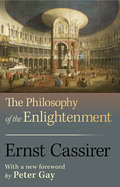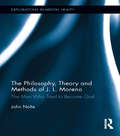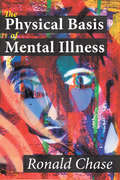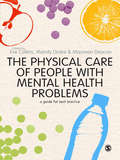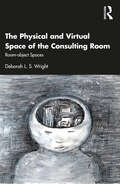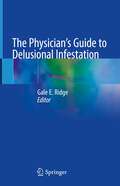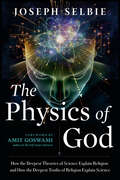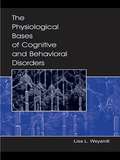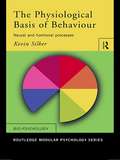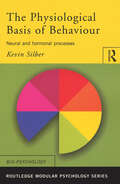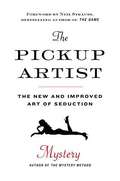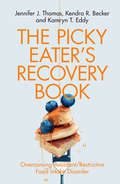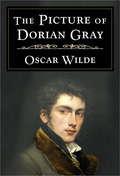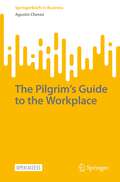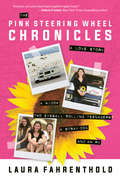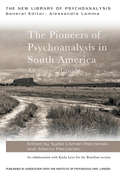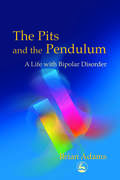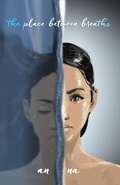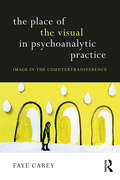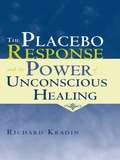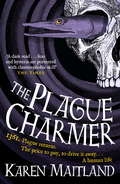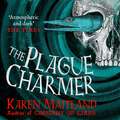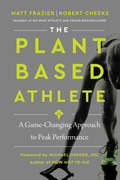- Table View
- List View
The Philosophy of the Enlightenment
by Ernst Cassirer Peter GayThe present book aims to be both more and less than a monograph on the philosophy of the Enlightenment. It is much less, for the primary task of such a monograph would be to offer the reader a wealth of detail and to trace the genesis and development of all the special problems of this philosophy.
The Philosophy, Theory and Methods of J. L. Moreno: The Man Who Tried to Become God (Explorations in Mental Health)
by John NolteJ. L. Moreno, M.D., is recognized as the originator of sociometry and psychodrama, and was a prodigious creator of methods and theories of creativity, society, and human behavior. The methods and techniques he authored have been widely adopted; the theories and philosophy upon which the methods are founded have not, as they are frequently couched in language which is not easily understood. Moreno’s ideas about group psychotherapy have pretty well gotten lost, and what he considered his greatest contribution, sociometry, gets paid superficial attention by most psychodramatists . Group psychotherapy and psychodrama are both widely practiced but often based on non-Morenean theory, likely due to the inaccessibility of Moreno’s work. This book outlines Moreno’s early years (his religious phase), the philosophy on which the foundation of his methods are based, and a description of the three major methods Moreno originated: psychodrama, sociometry, and group psychotherapy. It provides a more systematic presentation of Moreno’s work and presents his philosophy and theory clearer, more understandable manner.
The Phonological Mind
by Iris Berent"Humans instinctively form words by weaving patterns of meaningless speech elements. Moreover, we do so in specific, regular ways. We contrast dogs and gods, favour blogs to lbogs. We begin forming sound-patterns at birth and, like songbirds, we do so spontaneously, even in the absence of an adult model. We even impose these phonological patterns on invented cultural technologies such as reading and writing. But why are humans compelled to generate phonological patterns? And why do different phonological systems - signed and spoken - share aspects of their design? Drawing on findings from a broad range of disciplines including linguistics, experimental psychology, neuroscience and comparative animal studies, Iris Berent explores these questions and proposes a new hypothesis about the architecture of the phonological mind"--
The Physical Basis of Mental Illness
by Ronald ChaseThis accessible volume sets an ambitious goal: to help people better understand the nature of mental illness. The term itself is a problem for most who believe, consciously or not, that individuals have both a mind and a body. Ronald Chase is interested in the roots of this thinking about mental illness, and finds it in philosophical dualism, famously promoted by Rene Descartes in the seventeenth century. Chase believes this perspective contributes to the stigma associated with mental illness, and argues for a different conceptual understanding. He describes and evaluates several alternatives, including behaviorism, physicalism, and functionalism. He also explores whether mental states can be reduced to brain states, and whether mental events cause things to happen. His provocative answers suggest mind-body dualism is outdated and misleading, and some version of physicalism is more likely to help us understand mental illness. Chase presents a concise outline of the science of mental illness, with a focus on schizophrenia, noting that faulty brain development is the fundamental cause of major mental illness. Using detailed, but non-technical language, Chase describes how genes combine with environmental influences to produce changes in brain structures and functions. Chase insists on the need to understand mental illness as a biological phenomenon, yet accepts that people use mental terms and concepts in everyday discourse. This scientifically sound challenge to major assumptions currently in vogue with respect to mental illness will initiate a new dialogue on the subject. It will be important to academics, psychiatric professionals, and those affected by mental illness-victims, family members, and caregivers.
The Physical Care of People with Mental Health Problems: A Guide For Best Practice
by Mandy Drake Eve Collins Maureen DeaconThis accessible, practical text provides mental health practitioners with the core knowledge and skills they need to be able to care effectively for the physical health of those who have been diagnosed with mental illness. Linked closely to professional standards, and with a clear values- and evidence-base, the book aims to raise awareness of the physical health needs of individuals with mental health problems, outline the physical health assessment process and suggest health enhancing interventions for use in clinical practice. Consideration will be given to the following aspects of physical wellbeing; - cardiovascular health - diabetes - sexual health - respiratory health - cancer - wound care - substance misuse - infection control - medicine management Further chapters on legal and ethical issues explain the need to practise appropriately within the Mental Health Act and the Mental Capacity Act, while a linking theme throughout the book stresses the importance of health promotion. Backed up by case examples and with a range of reflective exercises throughout, The Physical Care of People with Mental Health Problems is a key text for students and practitioners working in mental health services. It will also be useful reading for practice nurses, district nurses, midwives and all allied health practitioners.
The Physical and Virtual Space of the Consulting Room: Room-object Spaces
by Deborah L WrightIn this thought-provoking book, Deborah Wright examines the role of both space and objects as they become manifest in the psychoanalytic process and looks at how the role of the consulting room in the therapeutic process is both primitive and transferential. Wright explores spatialisation as simultaneously being a psychological projection of meaning and as physically acting upon the environment, utilised to master the undifferentiated, relentless, internal pressure of instinct. Throughout The Physical and Virtual Space of the Consulting Room, she considers the spatial aspects of work with patients by foregrounding the importance of the consulting room and its contents, including the impact of changes of consulting room, travelling, and in working virtually. Illustrated with clinical material and hand-drawn artwork, Wright orients the reader in the new territory by going beyond the existing literature that considers the objects and space of the consulting room solely as transferential aspects of the analyst. The interdisciplinary approach in this book calls on psychoanalytic theory and technique as well as philosophy, history, archaeology, and anthropology, which will be of great interest to all psychoanalytically orientated therapists as well as anyone, clinical or non-clinical, who makes use of psychoanalysis.
The Physical, Personal, and Social Impact of Spinal Cord Injury: From the Loss of Identity to Achieving a Life Worth Living (SpringerBriefs in Public Health)
by Jenny LiebermanThis compact book uniquely examines individual lived experience with spinal cord injury (SCI). It provides education and a clearer understanding of the many facets of a SCI -- medical, physical, psychological, cognitive, personal, and social -- in a single compact volume, so that readers learn the effect a SCI can have on a person. The contents also include resources for more specific exploration of information. SCI is a direct public health concern due to not only the cause of the injury itself, most often of violent origin, but also how the individuals perceive themselves after the injury and their participation in society, as well as how society welcomes them back. This compact book has four distinct chapters, each one addressing a different component of SCI with a set of resources to guide the individual with SCI, their family and their friends in the process. It first explores the physical as a means to provide an understanding of what body changes occur. From there, it goes on to examine what is the subjective meaning and lived experience of disability for persons with SCI. The brief ends with an examination of what organizations and programs exist to promote independence and a sense of community for persons with SCI.The Physical, Personal, and Social Impact of Spinal Cord Injury: From the Loss of Identity to Achieving a Life Worth Living is a book with broad appeal. It is written in such a way that it serves as a useful and accessible resource for people who work with persons with SCI, students and instructors with an interest in the subject, as well as persons with SCI themselves and their families.
The Physician's Guide to Delusional Infestation
by Gale E. RidgeThis unique, ground-breaking book is a comprehensive clinical guide to the psychiatric disorder of Delusional Infestation (DI). DI is a psychiatric illness characterized by patients holding a monothematic fixed belief of infestations on their skin, body, or immediate environment - a belief that is not supported by objective medical evidence. Delusional beliefs may be shared among individuals, and perceived pathogens include living organisms such as parasitic worms, bacteria, fungi, and insects. Organic or non-organic infiltration by fibres, threads, or other inanimate particles or objects, known or unknown to medical science, are also described by patients. DI is severely underreported because of social stigma, limited physician awareness, and patient doctor-hopping.Written for physicians, the book offers a multidisciplinary, compassionate care model for patients burdened by this pernicious disorder. Other health professionals and administrators will find the work highly valuable, as will professionals in fields such as veterinary medicine, pest management, entomology, parasitology, and information services supported by academia.The Physician’s Guide to Delusional Infestation assembles and organizes all current knowledge of DI and presents material in three parts. Part I introduces and reviews DI’s historical background, showing how our understanding of the condition has developed. Its concise sections include useful tables, illustrations, algorithms, and reference lists for clinicians who work with DI patients.Part II covers differential diagnosis, treatment, and ways to work effectively with DI patients. Since these patients are often high-functioning, particular techniques of interviewing, joining with patients, sampling, and laboratory testing are explained. International travel, physician fallibilities, possible alternative diagnoses, the Internet, and veterinary and public health concerns are all addressed.PartIII is a series of chapters written by experts in their fields. This section allows each author to present personal experiences from their respective professions -- observations and opinions that show a variety of perspectives among the book’s authors. Part III includes a chapter on common human parasites with their biology, behaviours, and distributions. The book will serve as a comprehensive, yet concise, reference for physicians whose patients have unusual, baffling, or implausible medical histories and physical examinations. A soon to be gold-standard resource, The Physician’s Guide to Delusional Infestation equips and empowers all physicians -- and many others interested in the topic -- with an expert, comprehensive understanding of this complex disorder.
The Physics of God: How the Deepest Theories of Science Explain Religion and How the Deepest Truths of Religion Explain Science
by Joseph Selbie“An impressive and thought-provoking work . . . regarding the metaphysical mysteries of life, physical reality, and human consciousness. Highly recommended!” —Spirituality TodayScience and religion are often thought to be in conflict. But the contemporary fields of relativity, quantum physics, neuroscience, and more are in agreement with the transcendent phenomena described by saints, sages, and near-death experiencers. Today’s science actually provides profound insight into miracles, immortality, heaven, God, and transcendent awareness.The Physics of God describes the intersections of science and religion with colorful, easy-to-understand metaphors, making abstruse subjects within both science and religion easily accessible to the layman. This intriguing book:Pulls back the curtain on the light-show illusion we call matter.Connects string theory to religion’s transcendent heavens.Reveals the scientific secret of life and immortality.Demonstrates the miracle-making power of our minds to effect instantaneous physiological changes.Included in this revised edition is a new chapter on the physics of meditation and other updates.
The Physiological Bases of Cognitive and Behavioral Disorders
by Lisa WeyandtUp to twenty percent of the American population suffers from a diagnosable mental disorder, and cross-national studies suggest a high prevalence of such disorders elsewhere. In recent decades, advances in our knowledge of the brain are causing us to question many of the theories underlying traditional approaches to diagnosing and treating these disorders. Researchers in diverse fields--molecular genetics, behavioral, cognitive and clinical neuroscience, neuroimaging, neurophysiology, and neurology--have contributed to the advances.The new knowledge that has been amassed should inform work with clients, but for most practitioners and practitioners-in-training, who lack specialized background, it has been difficult to grasp.In this book, specifically designed to meet the needs of graduate students in clinical, counseling, and school psychology programs, Lisa Weyandt offers a comprehensive, up-to-date, readable overview of our current understanding of the biological bases of psychopathology and its implications for intervention. Early chapters concisely and clearly explain the basics of brain structure and function and current research techniques; they set the stage for chapters examining each major group of disorders. An extensive art program underlines the important points.
The Physiological Basis of Behaviour: Neural and Hormonal Processes
by Kevin SilberThe Physiological Basis of Behaviour deals with the basic structures of the central nervous system, the techniques used in neuroscience and examnines how drugs affect the brain.
The Physiological Basis of Behaviour: Neural and Hormonal Processes (Routledge Modular Psychology Ser.)
by Kevin SilberAn introduction to the basic structures of the central nervous system, the techniques used in neuroscience and a short discussion of the affect of drugs on the brain.
The Pickup Artist: The New and Improved Art of Seduction
by Mystery Chris OdomThe world's greatest pickup artist is back! After the bestselling expose The Game pulled back the curtain on Mystery and his culture of professional pickup artists, he became an international phenomenon. Unfortunately, while it's no secret that Mystery's ideas are wildly effective, women have started to catch on. They've seen the show and heard the routines-so now it's time for the next level of game! With techniques honed over fifteen years of trial, error, and ultimate triumph, and following his hit VH1 reality series, the celebrated sensei is back with his latest living-large exploits and a new and improved playbook for the twenty-first-century playboy. As the book begins, Mystery and his crew have withdrawn to their swank Miami mansion to plot their next move. When a new student comes to stay at the house, Mystery draws him deep into the pickup-artist lifestyle and shows him an intimate portrait of the master of seduction. Mystery lays out a complete system of game, and unveils his latest (and fully field-tested) strategies and techniques. The Pickup Artist includes * a list of all the triggers that create-and destroy-attraction * a new way to approach strangers and start a conversation: microcalibrated openers * Mystery's most powerful humor technique, the Absurd-so you'll never run out of things to say again * a full chapter on physical escalation (touching, kissing, "making a move") * the solution to inner-game issues, for when you're not confident enough * and much, much more. Whether he's holding court with eager disciples in South Beach, hanging out with his crew of fellow super-seducers in Las Vegas, or partying it up in the Hollywood Hills, Mystery is never far from where the action is-and never fails to get a piece of it. Now it's your turn. Read The Pickup Artist and get into the game.
The Picky Eater's Recovery Book: Overcoming Avoidant/Restrictive Food Intake Disorder
by Jennifer J. Thomas Kamryn T. Eddy Kendra R. BeckerAre you a picky eater? Do you worry that food will make you vomit or choke? Do you find eating to be a chore? If yes, this book is for you! Your struggles could be caused by Avoidant Restrictive Food Intake Disorder (ARFID); a disorder characterized by eating a limited variety or volume of food. You may have been told that you eat like a child, but ARFID affects people right across the lifespan, and this book is the first specifically written to support adults. Join Drs. Jennifer Thomas, Kendra Becker, and Kamryn Eddy - three ARFID experts at Harvard Medical School - to learn how to beat your ARFID at home and unlock a healthier relationship with food. Real-life examples show that you are not alone, while practical tips, quizzes, worksheets, and structured activities, take you step-by-step through the latest evidence-based treatment techniques to support your recovery.
The Picture of Dorian Gray
by Oscar WildeOscar Wilde's only novel. Dorian Gray sells his soul in a bid to maintain eternal youth and beauty. Only his portrait will age. As with all such bargains, however, there will be a reckoning.
The Pilgrim’s Guide to the Workplace (SpringerBriefs in Business)
by Agustin ChevezThis is an Open Access book.Hoping to incubate a unique idea about workplace design, Dr. Agustin Chevez walked in isolation for 42 days from Melbourne to Sydney. His pilgrimage delivered 34 Signposts, a collection of insights which hold the promise to guide us to a better place to work. While firmly positioned within the shifting context of work, the Signposts point away from reactive solutions with a short shelf life. Instead, these markers are infused with a diversity of thought instilled by Agustin’s pilgrimage and reclaim the forgotten qualities of solitude, boredom, adversity, and absurdity as mechanisms to deliver innovation and create improved working environments. On his way to Sydney Agustin relied on maps and people with local knowledge of the lands he traversed. Similarly, in this book, he consults people with local knowledge in various design disciplines, management, and technology as he navigates the many regions of the workplace and work practices covered by the Signposts. When he reaches the end of the known trails, he starts laying paths that take us closer to where the Signposts converge. Agustin writes from the perspective of a pilgrim, architect, workplace consultant, and researcher and invites you to join him as a fellow pilgrim. You will be rewarded with a journey that revisits our assumptions about the way we use space to host the ever-evolving notion of work – an expedition leading not only to better versions of the workplace, but a better version of ourselves. “This book takes about three hours to read, and it could take a lifetime to fully extract all the benefits that it contains. This does not suggest that there are not immediate benefits available from reflecting on and applying the Signposts that are core to the book's intellectual contribution.” - Peer Review extract
The Pink Steering Wheel Chronicles: A Love Story
by Laura FahrentholdSuddenly widowed and with two young daughters, author and journalist Laura Fahrenthold recounts her courageous and healing journey across the United States and Canada as she seeks answers to her loss and comfort in her grief.The Pink Steering Wheel Chronicles presents a moving portrait of life told with unflinching honesty about marriage, motherhood and mourning. Laura Fahrenthold knew that to cope with her painful loss, she needed to do it on her own terms. She bought an RV, took her kids and their dog, and drove across the United States and Canada in search of healing and understanding. A career in journalism fills The Pink Steering Wheel Chronicles with insight and wit as Laura shares her adventures and misadventures, her deeply-layered love story, and her hilarious slice of life dispatches during her 30,152-mile road trip.
The Pioneers of Psychoanalysis in South America: An essential guide (The New Library of Psychoanalysis)
by Nydia Lisman-Pieczanski Alberto PieczanskiShortly before and during World War II many European psychoanalysts found refuge in South America, concentrated in Buenos Aires. Here, together with local professionals, they created a strong, creative and productive psychoanalytic movement that in turn gave birth to theoretical and clinical contributions that transformed psychoanalysis, psychology, medicine and culture in South America. The Pioneers of Psychoanalysis in South America is a collection of those pioneers’ papers, and introduces the reader to a body of ideas and advancements, many of which have had limited and piecemeal exposure within the psychoanalytic community in the rest of the world until now. The editors Nydia Lisman-Pieczanski and Alberto Pieczanski present original papers and essays, many of which have never before been published in English; those that have been translated were rarely presented in context. Each one of the chapters is accompanied by a scholarly introduction written by psychoanalysts, many of whom personally knew the pioneers and their oeuvres in depth, tracing the roots of their ideas in the European analytic schools. The Pioneers of Psychoanalysis in South America is divided into six main sections: Psychoanalytic process Psychoanalytic technique Metapsychology Psychoanalysis of children Culture and society Psychosomatic medicine. Nydia Lisman-Pieczanski and Alberto Pieczanski provide a coherent guide to the seminal ideas and practices of the South American psychoanalysts who have made major theoretical and clinical contributions to the advancement of the psychoanalytic discipline. The chapters present the material in a way that is accessible to psychoanalysts from across the globe and will enable them to incorporate the ideas and practices outlined here into their everyday psychoanalytic work. It will also be of interest to psychoanalytic psychotherapists, academics interested in the history and development of psychoanalytic ideas and psychoanalysis, and advanced students. The following link leads to an video interview featuring Nydia Lisman-Pieczanski and Alberto Pieczanski by the Washington Center for Psychoanalysis for the History Project, where they open up about their stories, their marriage, and their new book: https://www.routledge.com/posts/8996
The Pits and the Pendulum: A Life with Bipolar Disorder
by Brian AdamsSpending a week doing nothing but exploring the possibilities of Lego, thereby risking yet another job; impulsively sinking all his savings into wildly impractical self-employment ventures; sleepless nights, gripped by the need to write - these are just some manifestations of the often damaging periods of manic, uninhibited energy Brian Adams has experienced since his mid-twenties. But as a sufferer of bipolar disorder (also known as manic depression), he has been hospitalized several times with debilitating depression and undergone electric shock treatment, numerous drug therapies and even gone so far as to attempt to take his own life. This engaging, humorous, sometimes dark and sometimes startling account gives rich insight into how it feels to live with bipolar disorder. It is illuminating, and entertaining, reading for people with mental health problems, their families and professional carers.
The Place Between Breaths
by An NaFrom master storyteller and Printz Award–winning author An Na comes a dark, intensely moving story of a girl desperately determined to find a cure for the illness that swept her mother away, and could possibly destroy her own life as well. <P><P>Sixteen-year-old Grace is in a race against time—and in a race for her life—even if she doesn’t realize it yet… <P><P>She is smart, responsible, and contending with more than what most teens ever should. Her mother struggled with schizophrenia for years until, one day, she simply disappeared—fleeing in fear that she was going to hurt those she cared about most. Ever since, Grace’s father has worked as a recruiter at one of the leading labs dedicated to studying the disease, trying to lure the world’s top scientists to the faculty to find a cure, hoping against hope it can happen in time to help his wife if she is ever found. But this makes him distant. Consumed. Grace, in turn, does her part, interning at the lab in the gene sequencing department daring to believe that one day they might make a breakthrough…and one day they do. Grace stumbles upon a string of code that could be the key. But something inside of Grace has started to unravel. Could her discovery just be a cruel side effect of the disease that might be taking hold of her? And can she even tell the difference? <P><P>Unflinchingly brave, An Na has created a mesmerizing story with twists and turns that reveal jaw-dropping insights into the mind of someone struggling with schizophrenia.
The Place of the Visual in Psychoanalytic Practice: Image in the Countertransference
by Faye CareyThe Place of the Visual in Psychoanalytic Practice: Image in the Countertransference explores the place of the visual image in psychoanalysis and psychotherapy, a still relatively unexplored topic in the psychoanalytic literature. Though ‘talking therapies’ are necessarily structured around the use of the spoken word, it can be difficult and at times misleading to explore the unconscious through speech alone. This book examines how it may be further understood through recognising the presence of imagery as a form of non-verbal, but valuable, means of communication. Drawing on the work of Freud, Bion, Winnicott and Ogden, alongside other British and American contributions to this infrequently addressed subject, the book examines the connection between reverie, dream and daydream and explores the reservoirs of imagery of both client and therapist, focusing mainly on the therapists' s visual countertransference. Covering essential theory and a wealth of clinical material, The Place of the Visual in Psychoanalytic Practice: Image in the Countertransference is a rich yet accessible guide to both recognising and using visual imagery within the clinical setting for both psychoanalysts and psychotherapists.
The Placebo Response and the Power of Unconscious Healing
by Richard KradinPlacebo responses are automatic and unconscious and cannot be predicted based on conscious volition. Instead, they reflect complex interactions between the innate reward system of the nervous system and encoded procedural memories and imaginal fantasies. The placebo response contributes inextricably to virtually all therapeutic effects, varies in potency, and likely exhibits its own pathologies. The Placebo Response further considers that the critical elements required to provoke placebo responses overlap substantially with what most current psychotherapies consider to be therapeutic, i.e. an interpersonal dynamic rooted in concern, trust and empathy. The potential importance of training caregivers in how to optimize placebo responses is considered a crucial feature of both the art and science of care-giving.
The Plague Charmer: A gripping story of dark motives, love and survival in times of plague
by Karen Maitland1361. An unlucky thirteen years after the Black Death, plague returns to England.'Fear and hysteria are portrayed with claustrophobic skill' THE TIMES'Dark and enthralling... with an unexpected hero' JULIE COHENFrom the bestselling author of Company of Liars, Karen Maitland, The Plague Charmer is a darkly compelling novel following a stranger who arrives in an isolated community in the grips of a medieval pandemic. When the sickness reaches the village of Porlock Weir, who stands to lose the most? And who will seize this moment for their own dark ends?The dwarf who talks in riddles? The mother who fears for her children? The wild woman from the sea? Or two lost boys, far away from home?PESTILENCE IS IN THE AIR. BUT SOMETHING DARKER LURKS IN THE DEPTHS. Why readers are gripped by The Plague Charmer'Its horrors are vividly told but with an underlying sense of human resilience and hope''A real page turner''The best and worst of human behaviour in troubled times''Poignant, shocking and haunting''It was so easy to be drawn into this world...'
The Plague Charmer: A gripping story of dark motives, love and survival in times of plague
by Karen Maitland'A dark read... fear and hysteria are portrayed with claustrophobic skill' The Times The Plague Charmer, by Karen Maitland, Queen of the Dark Ages and bestselling author of Company of Liars, will chill and delight fans of Ken Follett's A Column of Fire and The Witchfinder's Sister in equal measure.1361. An unlucky thirteen years after the Black Death, plague returns to England.When the sickness spreads from city to village, who stands to lose the most? And who will seize this moment for their own dark ends?The dwarf who talks in riddles?The mother who fears for her children?The wild woman from the sea?Or two lost boys, far away from home?Pestilence is in the air. But something much darker lurks in the depths.
The Plant-Based Athlete: A Game-Changing Approach to Peak Performance
by Robert Cheeke Matt FrazierThe only research-based guide for connecting a plant-based diet with peak athletic performance, featuring interviews with professional athletes who've made the switch from meat to plants.The Plant-Based Athlete by Matt Frazier and Robert Cheeke reveals the incontrovertible proof that the human body does not need meat, eggs, or dairy to be strong. Instead, research shows that a consciously calibrated plant-based diet offers the greatest possible recovery times, cell oxidation, injury prevention, and restorative sleep, and allows athletes to train more effectively, with better results.However, committing to a plant-based diet as an elite athlete, first-time marathoner, or weekend warrior isn't as simple as swapping vegetables for meat. Even the slightest food adjustments can impact performance. That's why Matt Frazier, founder of No Meat Athlete, and Robert Cheeke, founder of Vegan Bodybuilding, wrote this groundbreaking book, to guide those interested in making this important shift in how to do so with the best, most transformative results.The Plant-Based Athlete offers readers:A persuasive body of evidence for adopting a plant-based lifestyle, with key information about how macronutrients, micronutrients, and calories fuel a body running on plant foodsAn entire chapter devoted to protein - why plant sources of protein are preferable over meat, and how plant protein can be used to increase strength, muscle mass, and power60+ delicious and nutritious plant-based recipes, including Veggie Burger Patties, Garden Meatballs, Summer Pasta Salad, Vegan Mac & Cheese, French Toast, Acai Bowl, and a High-Energy SmoothieInsights from winning plant-based athletes in nearly every sport including champion ultrarunners Rich Roll and Scott Jurek; former NFL player David Carter; champion boxers Yuri Foreman, Unsal Arik, Cam Awesome, and Vanessa Espinoza; and Olympic-level swimmers, cyclists, figure skaters, sprinters, and more.A Day in the Life of a Plant-Based Athlete - examples of what, when, and how different athletes eat to fuel their varied workoutsAn instant classic and mainstay on health and fitness shelves everywhere, The Plant-Based Athlete is the ultimate invitation for joining the growing community of athletes who use plants to power their workouts and their every day.
